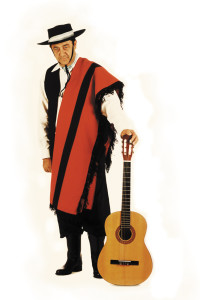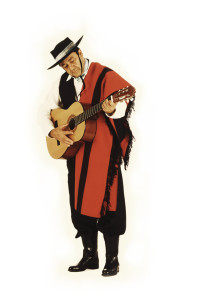Latin American music is a very popular genre of music in this county and in many countries around the world. Its exciting rhythms and melodies are played and sung everywhere – radio, television, films, live concerts, small and large celebrations, weddings and numerous other events.
 Latin American music is enjoyed and appreciated by both Hispanics and non-Hispanics alike. This music is primarily from Spanish and Portuguese countries and Latin American territories; also some French speaking countries.
Latin American music is enjoyed and appreciated by both Hispanics and non-Hispanics alike. This music is primarily from Spanish and Portuguese countries and Latin American territories; also some French speaking countries.
Origins
Roots of pre-Columbian cultures can be seen today in traditional Latin music. Historians and musicologists agree that pre-Columbian civilizations of Aztec, Incan and Mayan cultures provided the proof that music was important in governmental institutions, war and religion. Three significant elements stand out as sources of a strange admixture of our present day Latin American music:
1. Indigenous music from the ancient Indian inhabitants of Latin America in the form of melodies and rhythms.
2. The Spanish and Portuguese, brought cultural treasures from Europe that consisted of folk songs, dances and church music. They also brought musical scales, harmonies and rhythms they had known in their native land.
3. Slaves brought, from Africa and the West Indies, syncopated rhythms and chromatic notes. This gave the music of Latin America a distinctive African style that it has never lost.
 These three components have influenced not only contemporary Mexican, South American folk music and the popular music of the people but also the serious art music of noted composers. “The particular social and geographical conditions of Central and South America have blended these components into a style of music that is strikingly original, rhythmically fascinating, melodically pleasing and thoroughly alive,” wrote McKinney and W. R. Anderson in their book Discovering Music.
These three components have influenced not only contemporary Mexican, South American folk music and the popular music of the people but also the serious art music of noted composers. “The particular social and geographical conditions of Central and South America have blended these components into a style of music that is strikingly original, rhythmically fascinating, melodically pleasing and thoroughly alive,” wrote McKinney and W. R. Anderson in their book Discovering Music.
Songs and dances from Latin America have become very popular. The Salsa is based on Afro-Cuban rhythms and rock and jazz styles. The Samba is music from Brazil.
The word Samba means ‘to pray.’ The Bosa Nova is also very well-known from Brazil. The Calypso is from Trinidad with its vital rhythms and strange sounding English. The Tango; Rhumba; Mambo; Paso Doble; Conga; Habanera; Cha-Cha and Meringue are great Latin American dances. These have become popular and well known in European and North American cultures.
A very familiar and popular aspect of Latin music is the Mariachi band. The Mariachi music we know today was developed in the 19th century in the southern part of the state of Jalisco in Mexico. Originally, the Mexican ensemble of folk musicians consisted of two violins acoustic guitar, vihuela (a five string high pitched guitar), guitarron (a large bass guitar) and a Mexican folk harp. Later, trumpets were added and became a very important element of the contemporary Mariachi band, sometimes eclipsing the violins.The size of the ensemble varies.
Sergio Mendes; Richie Valens; Freddy Fender; Carlos Santana; Jose Feliciano; Gloria Estefan; Selena Gomez; Enrique Iglesias; Ricky Martin; Jennifer Lopez: Shakira and Christina Aguilera are some of the many Latin American music performers from the recent past and present.
Composers
Latin American music has certainly made its mark in the contemporary popular music field. But equally important is the serious art music of noted composers. Two individuals, Carlos Chavez (1899-1978) and Heitor Villa-Lobos (1887-1959) stand out as composers of significant contributions to great music.
Chavez was born in Mexico City. He was a conductor and composer as well as a teacher and performer. His music reflects an indigenous blend that came from the folk music of Mexico. Chavez encouraged many composers to write true Mexican music. A hallmark of his career was, he founded and conducted Mexico’s first symphony orchestra.
Villa-Lobos, a native of Rio de Janeiro, Brazil, was known as Brazil’s greatest composer. His compositions used Brazilian folk music as a basis. He was almost entirely self-taught. Extremely prolific, he wrote over 1400 works in virtually every musical idiom. Villa-Lobos put Brazil on the musical map. Under Brazil’s new nationalist regime, he was put in charge of organizing the musical life of Brazil. His educational reforms included the reorganization of the teaching of music in the schools. This proved to be very beneficial for the people of the nation.
The contributions of Latin American composers and musicians have enriched the musical fabric of countries not only “south of the border” but certainly the world in general. They have brought much enjoyment, entertainment and enlightenment to people beyond their borders.
Please submit your questions and comments to banddirector01@comcast.net
Visit our website at www.danvilleband.org for up-to-date information about the Danville
Community Band.
Leave a Reply